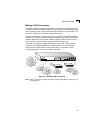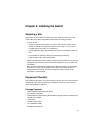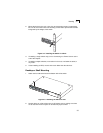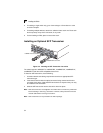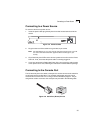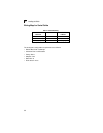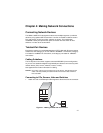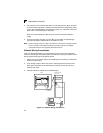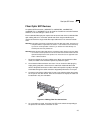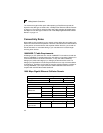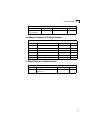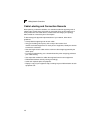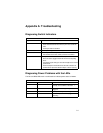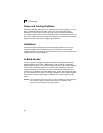
4-1
Chapter 4: Making Network Connections
Connecting Network Devices
The SM24-100SFP-AH is designed to interconnect multiple segments (or collision
domains) using optional SFP transceivers. It can be connected to network cards in
PCs and servers, as well as to hubs, switches or routers. Two combination
1000BASE-T/SFP ports provide the uplink connection from the switch to other
switches or routers at the central office.
Twisted-Pair Devices
Each device requires an unshielded twisted-pair (UTP) cable with RJ-45 connectors
at both ends. Use Category 5, 5e or 6 cable for 1000BASE-T connections, Category
5 or better for 100BASE-TX connections, and Category 3 or better for 10BASE-T
connections.
Cabling Guidelines
The RJ-45 ports on the switch supports automatic MDI/MDI-X pinout configuration,
so you can use standard straight-through twisted-pair cables to connect to any other
network device (PCs, servers, switches, routers, or hubs).
See Appendix B for further information on cabling.
Caution: Do not plug a phone jack connector into an RJ-45 port. This will damage the
switch. Use only twisted-pair cables with RJ-45 connectors that conform to
FCC standards.
Connecting to PCs, Servers, Hubs and Switches
1. Attach one end of a twisted-pair cable segment to the device’s RJ-45 connector.
Figure 4-1. Making Twisted-Pair Connections



